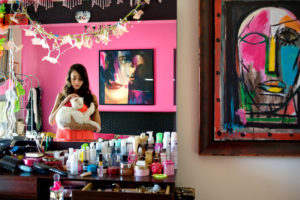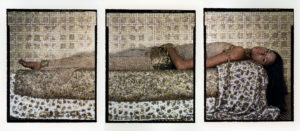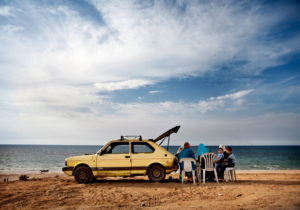When it comes to explaining a culture, a picture can outweigh a slew of less-than golden words. When the picture is explaining Islam and exploding myths about women in the societies of Iran and the Arab world, it’s really worth a look.
That’s the essence of an exhibition called She Who Tells a Story – Women Photographers From Iran and the Arab World, put together by Boston’s Museum of Fine Arts, now on view at the Canadian War Museum until March 4, 2018..
The show has gathered more than 85 photographs taken by 12 women from the Middle East. Their images range from documentary to portraits, all though are smashing pre-conceived notions of a part of the world where Canadians have been engaged since the very first peacekeeping mission about 60 years ago, as the museum points out. The photographers are: Jananne Al-Ani, Boushra Almutawakel, Gohar Dashti, Rana El Nemr, Lalla Essaydi, Shadi Ghadirian, Tanya Habjouqa, Rula Halawani, Nermine Hammam, Rania Matar, Shirin Neshat and Newsha Tavakolian and they come from across the region from Iran to Morocco.

Alia, Beirut, Lebanon, 2010, from the series A Girl and Her Room. Rania Matar (born in Lebanon in 1964). Pigment print. Photograph courtesy of the artist and Carroll and Sons, Boston, Museum of Fine Arts, Boston.
There are three themes in the show: deconstructing orientalism, new documentary and constructing identity.
The first category is all about exploding a big western mindset. Orientalism is a western view held in the 19th and 20th centuries of the Middle East, North Africa and the Far East as inferior cultures.
This section opens the show. In it are Shirin Neshat’s Women of Allah (photographs taken from 1993–1997). These are black and white images by the women of the Iran’s Islamic Revolution.
According to organizers from the Museum of Fine Arts in Boston, Neshat was the first photographer to examine the complexity of female identity in the Middle East from the point of view of a Muslim woman. Another visually compelling collection is Moroccan photographer Lalla Essaydi’s chromogenic (colour) prints on aluminum called Bullets Revisited #3.

Bullets Revisited #3, 2012. Lalla Essaydi (born in Morocco in 1956). Triptych, chromogenic prints on aluminum. Photo courtesy of Miller Yezerski Gallery Boston; Edwynn Houk Gallery New York. Reproduced with permission. Courtesy Museum of Fine Arts, Boston
The New Documentary section features works from the many conflicts and uprisings in the Middle East and Iran since the 1980s from the Iran-Iraq War to the Arab Spring that started in 2011.
Gohar Dashti provides an example, organizers say in material on the exhibition provided by the War Museum. She was born in 1980 grew up in a town near the Iranian border with Iraq during the Iran–Iraq War. Her images are said to evoke a feeling of being surrounded by constant conflict.
The third section examines daily life that women in the region experience from domestic chores to the social and political limits placed on women.

Untitled, from the series Women of Gaza, 2009. Tanya Habjouqa (born in Jordan in 1975). Pigment print. Museum purchase with general funds and the Horace W. Goldsmith Fund for Photography. Courtesy Museum of Fine Arts, Boston.






